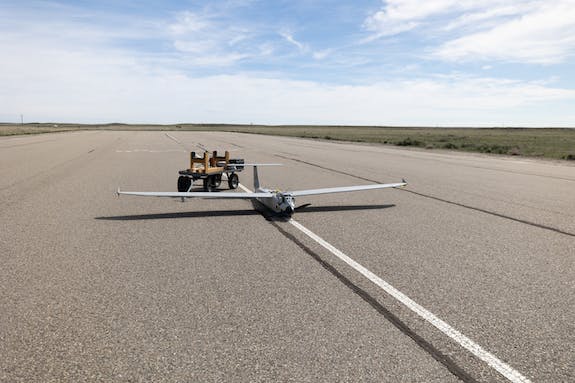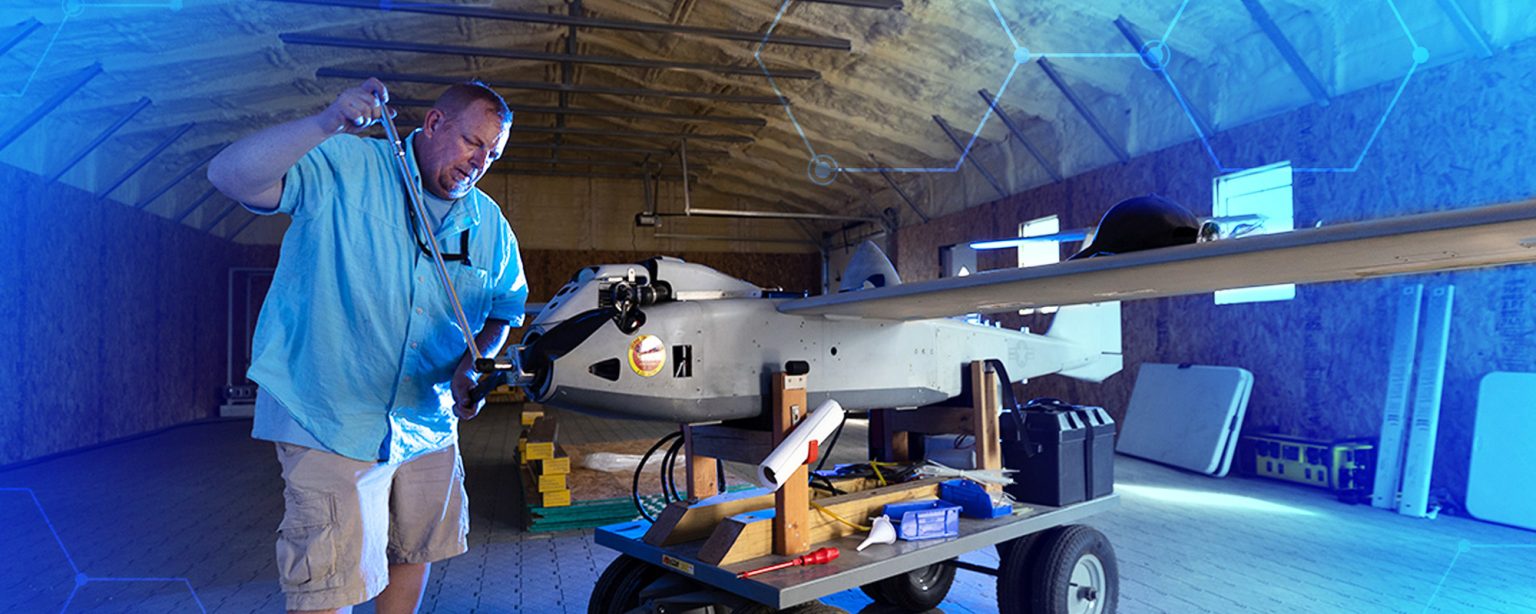Ever since the Wright brothers innovated in the back of their bicycle shop in Dayton, Ohio, aviation has been, at heart, a nuts-and-bolts endeavor. For all the sophisticated equipment Idaho National Laboratory’s Unmanned Aerial Systems team has at its disposal for testing high-tech cameras, radios and sensors, there is still a lot of gearhead ingenuity involved.
Here, a $500,000 high-tech surveillance camera is kept aloft on an aircraft powered by a 1/2-horsepower gasoline engine adapted from a Honda pressure washer. The launching catapult for the plane is basically an oversized potato gun.
The group operates both in Idaho Falls and at the INL Site from a base that includes a 1,000-foot paved runway, a control trailer and a newly built 1,500-square-foot hangar.

‘Workhorses’
The Department of Energy complex has noted INL’s strength in testing unmanned aerial vehicles, or UAVs (better known as drones). Over 20 years, the lab has developed capabilities to test new platforms and evaluate technology not only for DOE but also the Department of Defense and private industry. With 890 square miles of open high-altitude desert, a secure border, and a sophisticated wireless test bed, the INL Site has proven to be a great place for testing unmanned aerial vehicles against real-world conditions like severe weather, temperature swings and day/night operations.
The first UAV work at INL involved infrared imagery and sensors to monitor remediation work and, in the case of wildfires, to collect GPS information to better coordinate ground efforts. When the runway was installed in 2010, it allowed for the use of fixed-wing aircraft. Since then, INL has spent more than $4 million to train personnel, procure aircraft and establish support facilities. Overall, INL supports more than 40 types of unmanned aircraft using mobile control stations that incorporate power, communication, monitoring and data acquisition capabilities.
The flagship of the INL fleet is a modified Arcturus T-20, a medium-range, fully composite aircraft. Eight feet long and 18 feet wide from wingtip to wingtip, it weighs 175 pounds fully fueled and can stay aloft for 10 to 12 hours.
“They’re workhorses. They’re mules. They’re anything we want them to be,” said Matthew Balderree, who came to INL in 2014 from the U.S. Air Force.

Managing a fleet
Once a drone is aloft, one of the biggest tasks is not flying it from the command trailer, but rather keeping tabs on the computer to make sure nothing goes wrong. “More and more, our job is making sure it’s doing what needs to be done as opposed to telling it what to do,” Balderree said.
Properly equipped and programmed, a system equipped with artificial intelligence (AI) should be able to inspect a complex of wind turbines or a solar farm and automatically downlink data to computers on the ground for processing. It can support nuclear and other industrial plant operations by lowering inspection costs and increasing efficiency. Likewise, AI could make agriculture more efficient, automatically inspecting sprinkler lines or looking for crop damage from insects. “Drones are going to have a really good return on investment when it gets to that point,” he said.
INL offers engineering and integration capabilities to test advanced sensor, electronics and communication packages. The team can design, manufacture and integrate custom boards, chip sets and electronics at its shop. The team operates over almost the entire radio frequency spectrum, which is administered and maintained by INL’s Wireless Test Bed and its frequency spectrum managers.
Additionally, INL has accumulated numerous Certificates of Waiver or Authorization from the Federal Aviation Administration. Issued to public operators for specific unmanned aerial activities, these certificates allow the lab to operate in the administration’s approved airspace, ranging from Mud Lake northeast of the INL Site to Carey, ID in the southwest. This makes it easier to conduct a wide range of tests in one place, Balderree said. “We’re probably one of the few locations with that quality of assets.”

One of the greatest satisfactions in Balderree’s job comes from the crew’s flexibility to independently conduct rapid prototyping of radios and sensors.
“We don’t have a dog in the fight,” he said. “We’re trying to find out if these products are going to meet the needs of the guys in the field. We want to know that a piece of equipment is going to power up and work every time. We provide integration, testing and validation from an unbiased partner.”





